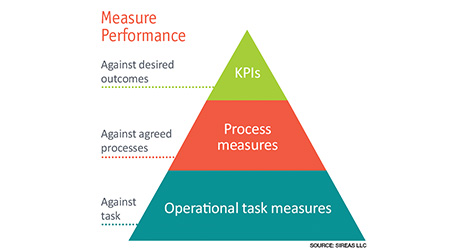Vested Outsourcing Model Means Client and Provider Equally Committed To Success
Second of a two-part article on how to move to strategic outsourcing relationships.
Another relational outsourcing model is Vested. It arose from University of Tennessee research that asked: “Is there a better way to outsource?” Researchers studied some of the most successful outsourcing relationships, including those from P&G, Microsoft, and McDonald’s. Researchers saw that these organizations had shifted away from transaction-based agreements to outsourcing relationships that reflected what they coined a “Vested” mindset.
Today, the original researchers define Vested as a mindset, methodology, and business model that enables true win-win relationships in which buying organizations and service providers are equally committed to each other’s success. Organizations that have applied the concept refer to it as a movement — because of its power to transform the way organizations outsource. The methodology is based on five core concepts and five key dimensions of compatibility and trust:
The core concepts are:
1. Outcome-based versus transaction-based.
2. Focuses on the “what” not the “how.”
3. Clearly defined and measurable desired outcomes.
4. Pricing with incentives that optimize the business.
5. Insight versus oversight governance structure.
The dimensions of compatibility and trust are:
1. Trust: Performance is the foundation of trust. Without performance, trust cannot exist.
2. Innovation: Strong, trusting relationships allow the parties to share risks and rewards, investing in each other’s capabilities and collaborating to achieve common goals.
3. Communication: There is open and timely sharing of all information relevant to a partner’s decision-making ability.
4. Team orientation: Both sides believe in the relationship and try to view decisions from the partner’s perspective to mitigate opportunism and promote collaboration.
5. Focus: There is common purpose, task clarity, and direction.
This model will not make sense for all facility management organizations. So far, it has been adopted mostly by corporations that have an existing relationship with a provider covering a broad range of services, after having outgrown more transactional models. With Vested, the internal facility manager and the external provider, together, have the not inconsiderable task of establishing the parameters — and the contract — for an effective Vested relationship.
Unlike transactional models, relational outsourcing provides the backbone and structure for innovation. Relational outsourcing is beneficial to both parties in that there is a sharing of risk and reward and a desire to operate in a partnership rather than the traditional supplier/client relationship. The client trusts the supplier to perform and encourages innovative thinking, and the supplier is incentivized to think strategically based upon financial reward and longer-term contracts. Success is not measured by the number of transactions completed but rather by the value created.
A step beyond relational outsourcing are investment-based models. These are not often seen across the real estate industry. Organizations that struggle to meet complex business requirements with a supplier sometimes choose to invest to develop capabilities themselves (or insource).
One approach is to develop an internal shared service organization with the goal of centralizing and standardizing operations that improve operational efficiencies. A shared services model is typically an internal organization based on an arm’s-length outsourcing arrangement. Using this approach, processes are often centralized into a shared service organization that charges business units or users for services they use. In some cases, shared service organizations are formed externally to the company (such as a subsidiary).
An equity partnership creates a legally binding entity. These take different legal forms, from buying a supplier, to creating a subsidiary, to equity-sharing joint ventures or entering into cooperative arrangements. Equity partnerships are best used when an organization does not have adequate internal capabilities and does not want to outsource.
There is no cookie-cutter solution that fits nicely for every organization. Many factors need to be considered when developing the right outsourcing strategy for a company, including company structure, culture, geographical location, services required, and business objectives. Moving from a transactional to a relational model requires more work upfront, but the payoffs can more than justify the effort.
Ingrid Fenn is president and CEO, SIREAS LLC. She can be reached at fenn@sireas.com. SIREAS has supported corporations in developing FM strategies both internally and from an outsourcing perspective and has helped organizations move from transactional to relational outsourcing. The firm is a certified Vested center of excellence.
Email comments to edward.sullivan@tradepress.com.
Related Topics:









